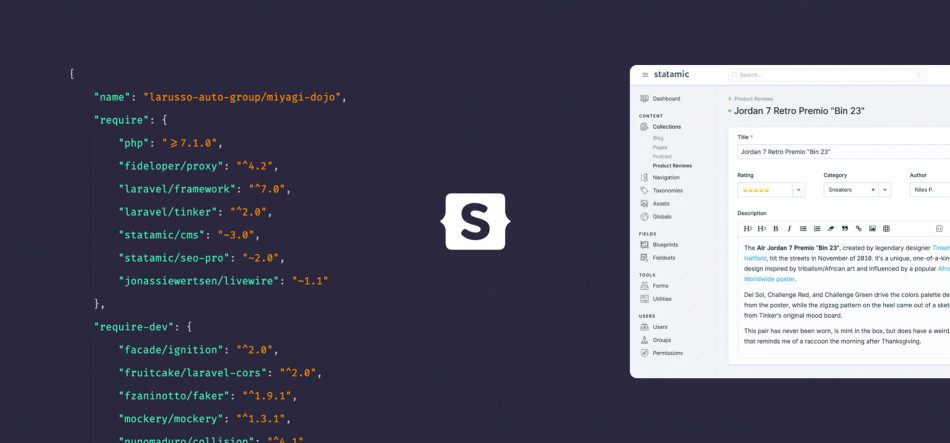
Where did Statamic come from? How does Statamic work? And most importantly, how do you even say Statamic?
Statamic (pronounced stat-ah-mick) is a pioneer in a new era of ‘content management systems’ (CMS) - aka, the platform your website is built on.
While the platform itself has been around for over 5 years, it only recently began to emerge as the preferred CMS for many website developers.
At hairyLemon, we recommend specific content management systems based on the requirements of each project. Consequently, we use a wide variety of CMS. In the process, we have developed a love/hate/frustration relationship with a fair few of them.
Here are our thoughts on Statamic:
The benefits of Statamic
Statamic’s creators made promises of a platform that was incredibly simple, readily available, version controlled, extendable and secure. As developers, it seemed like everything we ever dreamed of, but was it all too good to be true?
To find out for sure we need to dive deeper into how Statamic actually works:

Flat-file content management
Unlike WordPress, the world’s most popular CMS, Statamic is created using a flat-file content management system. This means the entire system is powered by static files. There is no database in between your application and your content. Your content is your application.
This structure is revolutionary in the CMS world, with database errors being the culprit of many late-night bug fixes. There are many benefits to creating sites ‘sans database’.
A few of these benefits include:
Speed: All you need is a server running the latest version on PHP. Since you are not querying a database for content, response times are incredibly fast.
Security: Databases are usually the first thing a hacker will target. No database, no worries.
Version control: Another main issue with databases is that they cannot be stored in version control systems such as Bitbucket. However, with only files, sites can easily be migrated, deployed and edited.
Simplicity: From a developers point of view, files are super easy to edit and manage. There is no configuration or migration between local, development and production. This speeds up the whole development and time-to-live process of a website.
And if your site really isn’t ready for the world of the flat-file, Statamic also supports the option to connect back up to a database.
Easy content administration
As well as great functional benefits, Statamic also has a beautiful user interface and admin experience. At first, it does take a bit of getting used to when coming from an older CMS, but once you start getting used to it, you will wonder how you ever managed a site without Statamic.
Completely customisable
The final benefit of Statamic is its extendability. While all of this sounds perfect for a small site, what would happen if we wanted to create any customised functionality or design?
The answer is all good news. Since Statamic is based on the PHP framework Laravel, it can support any programming that goes beyond your generic website. Laravel also allows you to create add-ons that extend the core functionality of Statamic, which is similar to a plugin or component in any other CMS.
Google-friendly
You may have guessed our developers are excited by everything Statamic can deliver. We are also happy to be working with a platform that delivers the attributes search engines, like Google, are looking for:
A secure and difficult-to-hack CMS that is fast and provides a great user experience.
The speed of your website has become a major ranking factor in Google search results, particularly relating to speed on mobile devices.
In a nutshell
A platform that makes your site faster, easier to use and admin and easier to protect from hacks is winning on every front. So in a nutshell, Statamic definitely ticks all the boxes that matter.
And with an initial price tag of USD$199, we believe the overall Statamic experience is worth every cent.
We would love to chat about how you can benefit from this great CMS - get in touch!